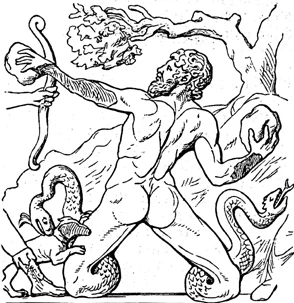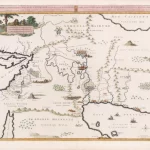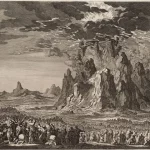Probably the oldest surviving written stories come from Mesopotamia, Sumer, and Babylon, which indicate that the Anunnaki came to Earth and created Homo Sapiens. If the cuneiform clay tablets discovered in the ancient cities of Nippur, Nineveh, Ur, and many others provide the oldest accounts, later used in the Bible, then we must ask whether we will find any connections to the Anunnaki in the Bible? Personally, I think so.
One of the most interesting passages in the Old Testament that provides an answer to this riddle is the written story in which Moses, after leaving Egypt, sent his men to explore the land of Canaan.
Numbers 13:17-19
17 These are the names of the men, whom Moses sent to view the land: and he called Osee the son of Nun, Josue.
18 And Moses sent them to view the land of Chanaan, and said to them: Go you up by the south side. And when you shall come to the mountains,
19 View the land, of what sort it is, and the people that are the inhabitants thereof, whether they be strong or weak: few in number or many
Arriving at the city of Hebron, the messengers encountered several different peoples, including the Anakim, to which I would like to draw special attention.
Numbers 13:22-23
22 And when they were gone up, they viewed the land from the desert of Sin, unto Rohob as you enter into Emath.
23 And they went up at the south side, and came to Hebron, where were Achiman and Sisai and Tholmai the sons of Enac.
After returning to the main group of Israelites, led by Moses, the messengers gave an account of their journey.
Numbers 13:26,27-28,34
26 And they that went to spy out the land returned after forty days, having gone round all the country,
28 And they related and said: We came into the land to which thou sentest us, which in very deed floweth with milk and honey as may be known by these fruits:
29 But it hath very strong inhabitants, and the cities are great and walled. We saw there the race of Enac.
34 There we saw certain monsters of the sons of Enac, of the giant kind: in comparison of whom, we seemed like locusts.
Anak (/ˈeɪnæk/; Hebrew: עֲנָק, homophone to a word for “giant, long neck, necklace”; Hebrew pronunciation: [ʕaˈnɔːq]) is a figure in the Hebrew Bible. His descendants are mentioned in narratives concerning the conquest of Canaan by the Israelites. According to the Book of Numbers, Anak was a forefather of the Anakim, a Rephaite tribe according to Deuteronomy 2:11. In their report, ten of the twelve Israelite spies associated the Anakim with the Nephilim of Genesis 6:1–4.
It is clear from this that the Anakites are direct descendants of the Nephilim, the fallen Angels or Giants.
Nephilim (Hebrew נפלים or נפילים – giants or fallen) – a term that is most often translated as “fallen” or “giants”. As a rule, it denotes beings of enormous size, born as a result of intercourse of the sons of God – usually identified with angels – with earthly women.
And the Giants are simply the rebellious Anunnaki, mentioned by Enoch in the Book of Enoch Chapter 6-7, and the Bible in the Book of Genesis 6:4
4 Now giants were upon the earth in those days. For after the sons of God went in to the daughters of men, and they brought forth children, these are the mighty men of old, men of renown.
It can be assumed that the information from the Bible, the Book of Enoch and Sumerian clay tablets speak of the same beings. Enak, Anak is another linguistic form of the Anunnaki, who were much taller than humans and were treated by Earthlings as giants.
So the question for today is: do the Bible verses directly convey information about the descendants of the Anunnaki, and thus provide evidence of the existence of the Anunnaki in the distant past?
As always, everyone must answer this question for themselves.
See also: https://en.wikipedia.org/wiki/Anak






it sound good, possible, but never known